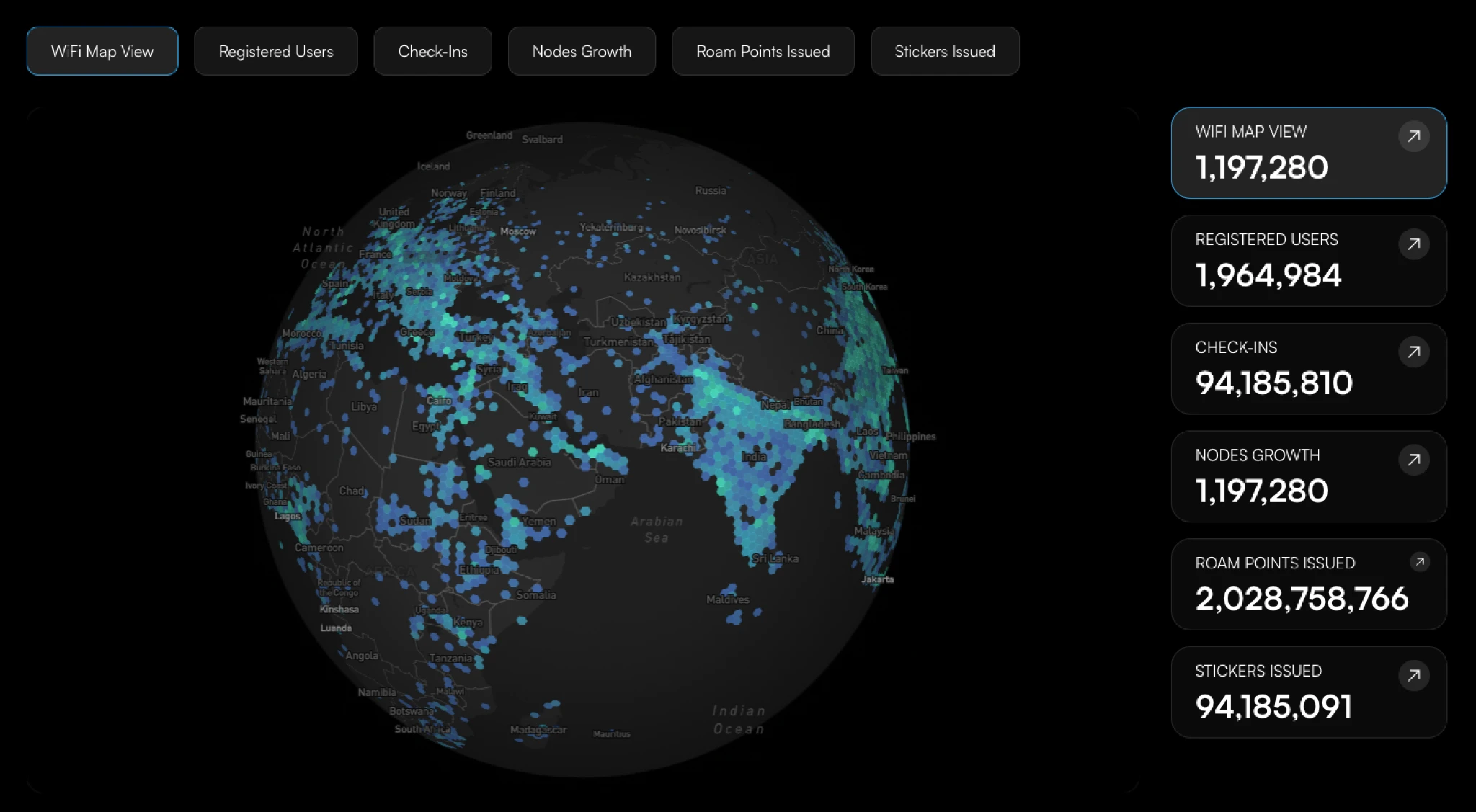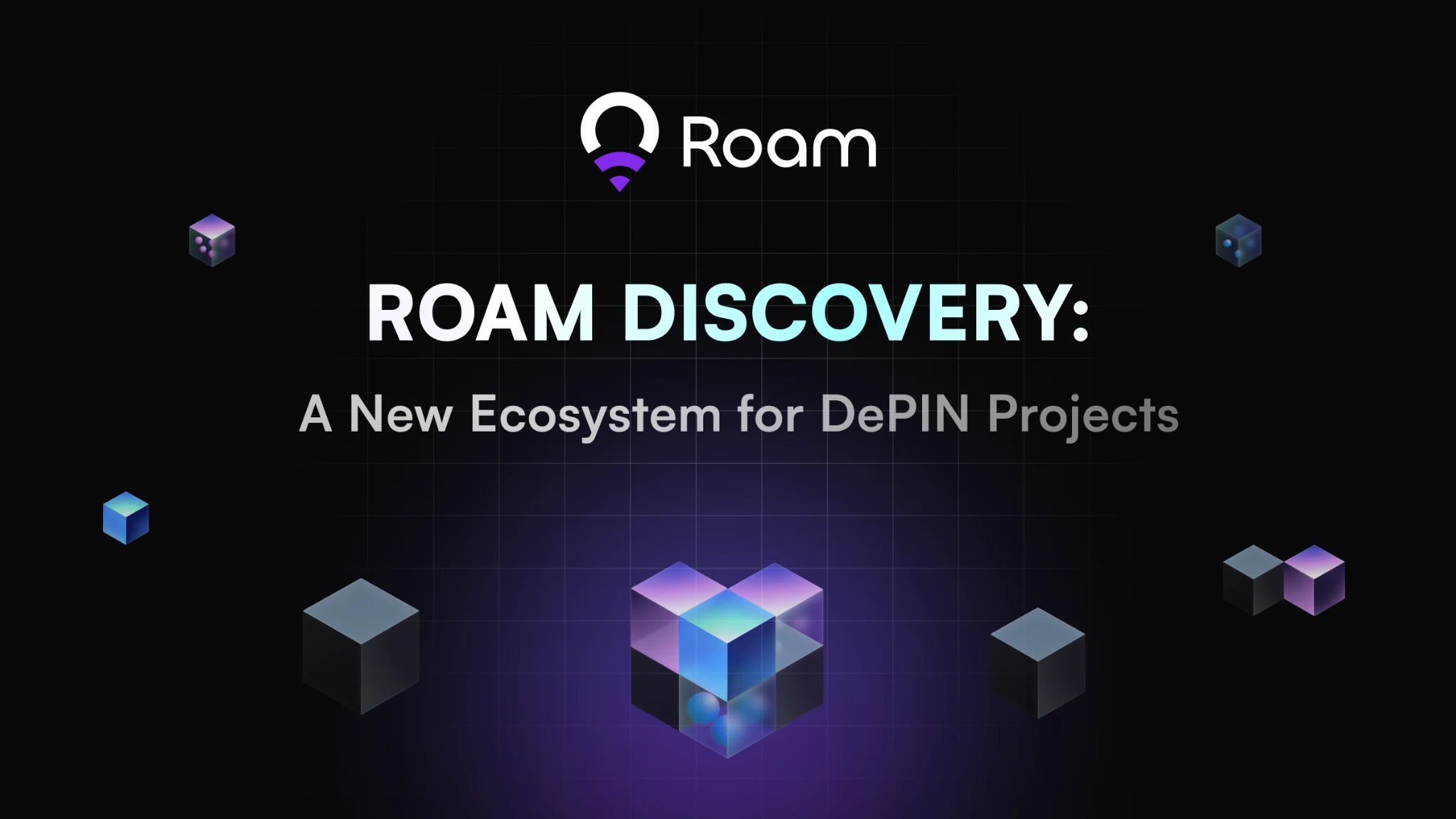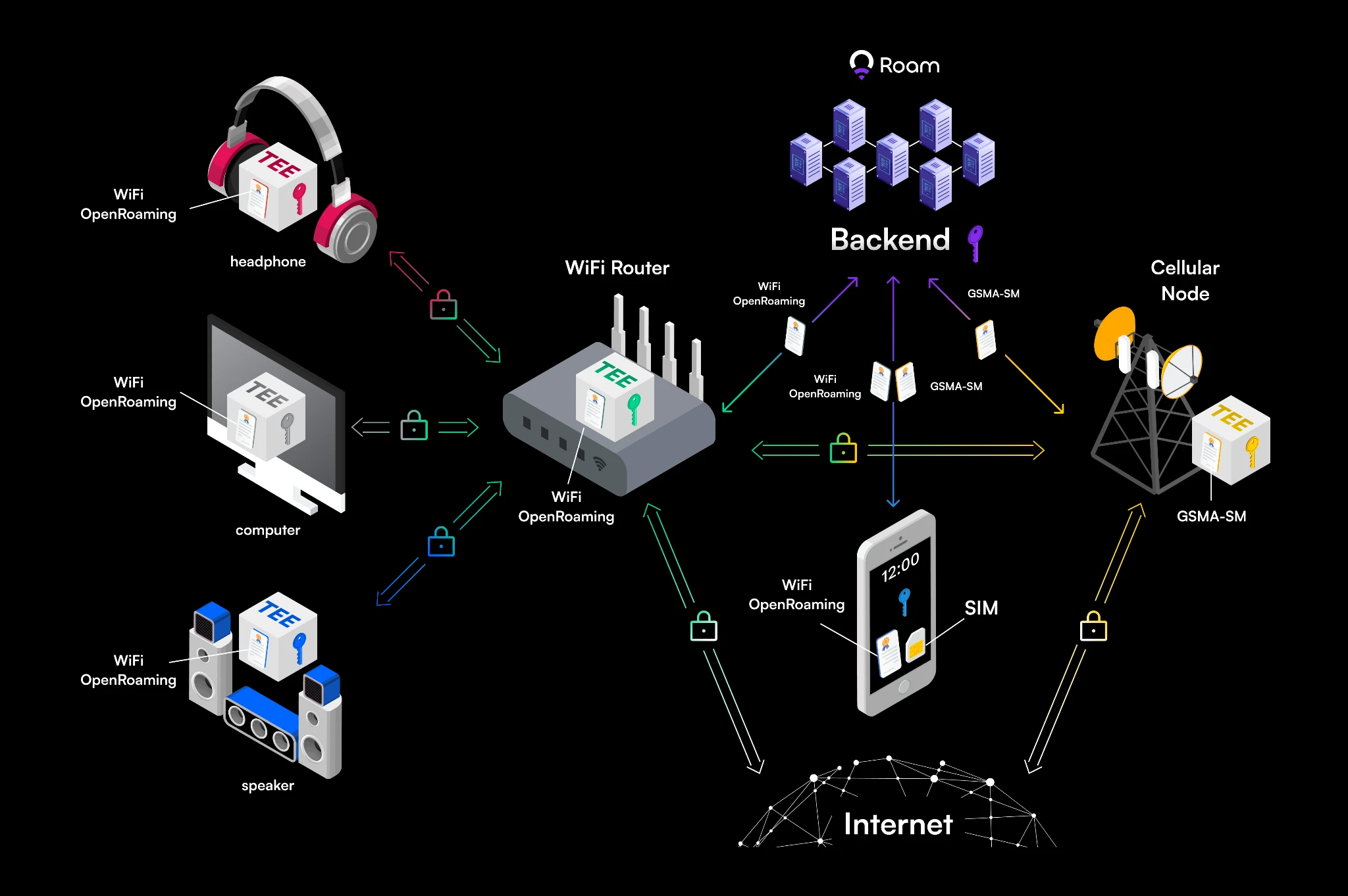From decentralized operators to AI base, Roam defines a new business model for communication networks
In the development of artificial intelligence (AI) infrastructure, computing power, algorithms, and data are regarded as the three indispensable pillars. In the first two years since the advent of GPT, computing power deployment has become the core narrative of AI infrastructure. Major companies have deployed graphics cards and data centers. Various Web3 mining companies represented by Coreweave have fully transformed into AI data centers, and then distributed computing power represented by IO and Aether has become the focus of the industry. With the advancement of the industry, the bottleneck of computing power is no longer the most critical issue at the current stage, and the extension of the edge side will be a new focus in this field. The value of blockchain in the computing power field is mainly reflected in promoting user participation through token incentives.
The development of algorithms and models is the current focus, especially the release of DeepSeek V3 has caused a great shock in the industry. Can the development of this field significantly reduce the cost of AIGC? When running a super large model, facing the constraints of resources such as electricity, can a distributed structure be used to implement the model architecture? In addition, can the distributed computing frameworks combined with privacy protection such as TEE, secure multi-party computing, federated learning, homomorphic encryption, etc. be practical? These are the current focus of the industry. There are not many valuable Krypto projects here, but from the perspective of the entire AI industry, the road is difficult but can always be solved.
The real challenge lies in the data layer, the lifeline of AI development. Do we really have enough clean data for training? Currently, all public domain data has basically been scooped up by mainstream companies, which has become the key to Cryptos real potential to change the AI industry.
1. Ensure high-quality and clean training data.
2. Break down data silos, especially private data barriers, so as to achieve data transferability while protecting privacy and authenticity.
This is where the Web3 project Roam, a Depin project and decentralized wireless network, achieves a breakthrough. Roams global open wireless network not only promotes connectivity, but also transforms private domain data into accessible and privacy-protected AI-usable data sets, turning them into AI basic data that can be called.

How Roam is revolutionizing data acquisition
Roam鈥檚 innovation solves one of AI鈥檚 most pressing data challenges: the unavailability of carrier-grade data. Traditionally, telecom companies have a wealth of data about time, location, and users. However, even tech giants like Google and Meta have difficulty accessing these datasets due to structural barriers. Instead, these companies have chosen to create their own ecosystems, such as iOS and Android, exacerbating data monopoly and fragmentation. In the AI era, this monopoly hinders comprehensive model training and global data integration.
With the support of the Wireless Broadband Alliance, the WiFi Alliance, and GSMA member units, Roam has developed the Global WiFi OpenRoaming + eSIM Top Up product. Starting from the construction of a new generation of WiFi OpenRoaming networks, a new network that is free, secure, and roamable is built worldwide. At the same time, with the help of its own top global eSIM traffic underlying supplier, it has transformed the previously paid and closed operator services into an open, global integrated new network. Users who participate in the construction of OpenRoaming will receive free eSIM traffic rewards. When users go to any country, the eSIM Top Up product can automatically convert traffic into local traffic. Ultimately, whether at home or on the road, whether in the country of residence or traveling, users will have an open network that can be automatically logged in with the DID on the chain, and they will never have to pay expensive roaming fees. Compared with the business models of traditional operators, and even some Web3 3 operators, Roam is a truly transnational future operator model that spans different connection methods. It is almost impossible for AI companies to obtain the support of all traditional operators and Internet/mobile phone manufacturers to train specific models. However, Roam has opened up a channel, which is to provide operator services through WEB3. In return, the data generated in the process can become a data source for all AI companies under privacy protection.
Roam provides a real example of how Web3 can change the mechanism of data generation and management, thereby breaking the private data barriers encountered by AI and realizing the circulation of traditional private data. Changes in business models often bring about rapid fission. As of Q4 2024, Roam has become one of the worlds largest decentralized physical infrastructure (DePIN) projects. The Roam Discovery Program further expands its boundaries and enriches AI training data sets by integrating multiple DePIN ecosystem partners. Roam can not only provide operator-level data to AI, but also work with ecosystem partners to provide weather data, CDN data, energy data, identity authentication data, payment and lending data, and even AI agent social, payment, and operating status data to AI models.

In addition to breaking the traditional business model and opening a path to using WEB3 to provide the AI society with a large amount of previously restricted data, Roam has some additional important contributions to the infrastructure data layer of AI.
First, the security and privacy of data across devices and regions. The core technology of Roam is to upgrade public WiFi to a secure login mode combined with DID. At the same time, it realizes cost-free roaming of WiFi and eSIM converged networks. The private key of the users blockchain and the private key of DID, the certificate of WiFi OpenRoaming, and the certificate behind eSIM are all unified and coordinated. All of this can be managed and all communications can be encrypted through the TEE-based KMS (key management system) in Roams existing devices. Roams data interaction complies with the standards of W3C DID and verifiable credentials, and combined with ZK technology, it can dispel the concerns of all parties about data security. The Roam technical team also did the worlds first work to combine blockchain-based digital identity with eSIM, WiFi, and Bluetooth chips.

Secondly, with the help of these new multi-dimensional spatial data such as time, space, and identity, we can help analyze which data is generated by the real society and which is created by AI. A combination of Roams 3W data (Who, When, Where) plus the payment data generated by the WiFi palm print payment terminal, combined with the tags of different data collection devices, can ensure that this data is not generated by AI but by real life. Similar broad-spectrum, multi-dimensional spatial data evaluation systems are the key to ensuring the value of AI training data. Roams RD team has 10 years of long-term accumulation in this field.

Third, it is convenient for AI agents to expand their living space and generate new data. They currently live in Twitter and TG. With the help of Roam, they can live in various smart home devices. The core reason why Roam has gained support from major industry manufacturers such as Samsung is that the devices of these major manufacturers are almost all WiFi devices. At present, the only way for these devices to connect to the network is to manually enter the username and password. It is very unsafe and not automatic. AI agents, people and devices are all uniformly marked with DID in the world of Roam. They all have corresponding WiFi OpenRoaming certificates. This builds a network foundation for AI agents to automatically move from the Internet world to the Internet of Things world. In the process of AI agents moving from one device to another, all the data they generate is encrypted, protected and stored by their private keys with the help of TEE. Combined with OpenRoaming WiFi and blockchain, secure transmission and distribution can be achieved. AI Agents entering the Internet of Things world and realizing cross-domain interoperability of data means that they can really become human companions. Humans no longer need to stare at a screen to interact with them. No matter what scenario humans are in, they can record in real time, respond quickly, and build a real avatar of humans. This is also the first step in the transfer of human flesh to silicon-based civilization.

Roam has redefined the data infrastructure of the AI era with an open and secure global network. From breaking the traditional operator model to supporting the construction of the AI data layer, Roam is promoting the deep integration of the AI society and Web3 through dual innovations in technology and business models. In this transformation led by Roam, we have not only seen a huge improvement in global network services, but also the embryonic form of the rise of silicon-based civilization.
This article is sourced from the internet: From decentralized operators to AI base, Roam defines a new business model for communication networks
Related: Interpretation of Binance Launchpool’s latest project Usual: RWA decentralized stablecoin
Original | Odaily Planet Daily ( @OdailyChina ) Author | Asher ( @Asher_0210 ) This afternoon, Binance announced that it will launch the 61st project Usual (USUAL) on Launchpool at 18:00 Beijing time on November 19, and start pre-market trading. Users can lock BNB and FDUSD to participate in mining, and the mining period is from 00:00 on November 15 to 8:59 on November 19, 2024, Beijing time. As soon as the news came out, the price of BNB once hit $660 in the short term, and temporarily reported $648, with a 24-hour increase of more than 6 %. Next, Odaily Planet Daily will take you to learn about Binance Launchpool’s latest project Usual and its token economic model as soon as possible. Project Introduction Image source: Official Twitter Usual…







